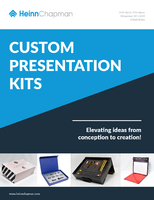Encapsulating Elastomers offer hydrolytic stability.
Press Release Summary:
Two-component urethane series encapsulants have durometers from 25 to 55 Shore A. Unfilled materials maintain integrity over operating temperature range of -40 deg to 125 deg C. Glass transition temperature of -72 deg C makes them suitable for low temperature potting applications. They offer electrical insulation, thermal cycling stability, chemical resistance, and no shrinkage. Mixed viscosities @ 25°C range from 4,200 to 1,600 cps.
Original Press Release:
Unfilled Low Durometer Urethane Elastomers
20-2305 Shore A 25
20-2310 Shore A 40
20-2350 Shore A 55
DESCRIPTION:
This two component urethane series are low durometer (25-55 Shore A), potting, casting, and encapsulating components. They are unfilled materials engineered to provide excellent hydrolytic stability and low moisture permeability. They have outstanding thermal cycling properties, low glass transition temperatures and low embedment stress to sensitive electronic components.
These unique urethane formulations maintain their integrity over a wide operating temperature range, -40°C to 125°C. The low glass transition temperature of -72°C makes these urethanes ideal for low temperature potting applications.
FEATURES
*Maintains flexibility at low temperatures
*Excellent electrical insulation
*Low stress on sensitive components
*Unaffected by moisture at high temperatures
*Thermal cycling stability
*Chemical resistance
*Hydrolytic stability
*No shrinkage
TYPICAL SPECIFICATIONS:
20-2305
Standard color: Black
Specific gravity @ 25°C: .91
Mix Ratio, by weight (A:B): 100:10
Mix Ratio, by volume (A:B): 100:7.5
Hardness, Shore A: 25
Mixed viscosity, 25°C, cps: 4,200
Coefficient of thermal expansion, per °C: 2.28x10E-04
Tensile strength, PSI: 150
Elongation, °10: 60
Glass transition temperature: -72
Pot life, 100 gram mass, 25°C: 1.5 hours
Dielectric constant, 25°C, 1khz: 4.5
Surface resistivity, 25°C, ohm: 1x10E+16
Volume resistivity, ohm-cm: 6x10E+16
Operating temperature range, °C: -40 to 125
20-2310
Standard color: Black
Specific gravity @ 25°C: .90
Mix Ratio, by weight (A:B): 100:10
Mix Ratio, by volume (A:B): 100:7.5
Hardness, Shore A: 40
Mixed viscosity, 25°C, cps: 3,000
Coefficient of thermal expansion, per °C: 2.28x10E-04
Tensile strength, PSI: 150
Elongation, °10: 55
Glass transition temperature: -72
Pot life, 100 gram mass, 25°C: 1 hour
Dielectric constant, 25°C, 1khz: 4.5
Surface resistivity, 25°C, ohm: 1x10E+16
Volume resistivity, ohm-cm: 6x10E+16
Operating temperature range, °C: -40 to 125
20-2350
Standard color: Black
Specific gravity @ 25°C: .90
Mix Ratio, by weight (A:B): 100:10
Mix Ratio, by volume (A:B): 100:7.5
Hardness, Shore A: 55
Mixed viscosity, 25°C, cps: 1,600
Coefficient of thermal expansion, per °C: 2.28x10E-04
Tensile strength, PSI: 150
Elongation, °10: 50
Glass transition temperature: -72
Pot life, 100 gram mass, 25°C: 1 hour
Dielectric constant, 25°C, 1khz: 4.5
Surface resistivity, 25°C, ohm: 1x10E+16
Volume resistivity, ohm-cm: 6x10E+16
Operating temperature range, °C: -40 to 125
INSTRUCTIONS FOR USE:
1) By weight, thoroughly mix 10 parts Part B to 100 parts Part A. Two components should be carefully weighed in metal, plastic, or glass containers. Avoid using paper cups and wooden stirrers.
2) Mixed material can be degassed at 1 to 5 mm Hg to ensure bubble free castings. Containers should be large enough to allow frothing.
3) Cure according to one of the following cure schedules:
25°C 24 Hours
45°C 2.5 Hours
65°C 1.5 Hours
85°C 40 Minutes
STORAGE & HANDLING & SAFETY:
Store both components at 75-85°F in original containers. If the containers are opened and the contents partially used, the material left in the container should be blanketed with dry nitrogen before sealing. Carefully read Material Safety Data Sheets before using.
IMPORTANT:
The information in this brochure is based on data obtained by our own research and is considered accurate. However, no warranty is expressed or implied regarding the accuracy of these data, the results to be obtained from the use thereof, or that any such use will not infringe any patent. This information is furnished upon the condition that the person receiving it shall make his own tests to determine the suitability thereof for his particular purpose.




